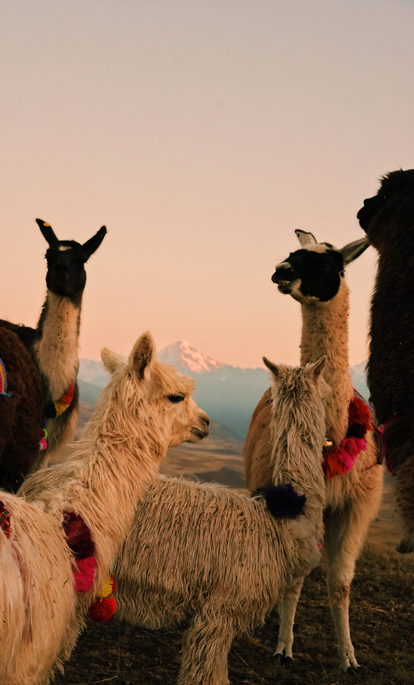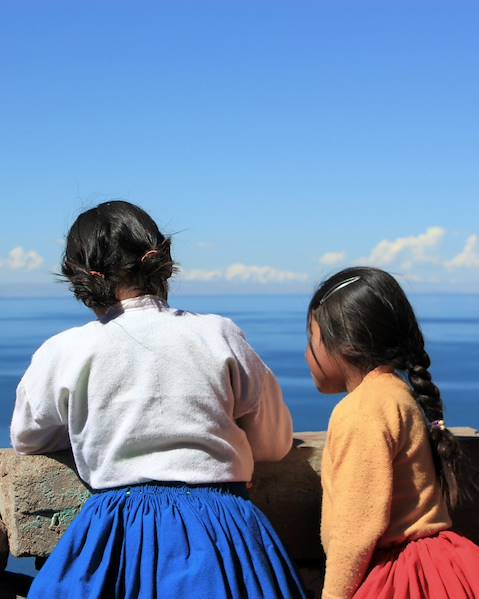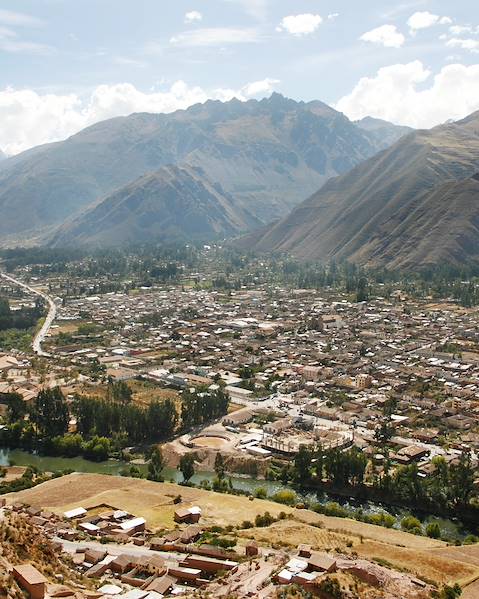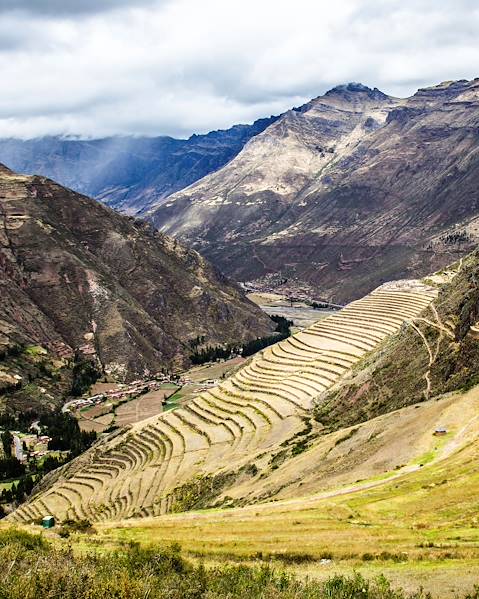The geography of Peru is one of its biggest draws. South America’s third largest country presents a variety of staggering landscapes, from towering mountains and wide beaches to empty deserts and lush rainforests. Discover a wealth of different worlds, all with their own individual sights, sounds, colours and tastes; travel back in time to ancient highland civilisations, explore the deep-rooted natural and cultural riches of the Amazon and immerse yourself a thrilling fusion of Inca and Hispanic influences. Peru is all of this and more...
Overview
Peru sits on the central western coast of South America, facing the Pacific Ocean. The country shares land borders with Ecuador, Colombia, Bolivia, Chile and Brazil. Home to around 28 million people, it’s the fifth most populated country in Latin America. Boasting a wide variety of scenery and a vast range of natural resources, the geography of Peru can be divided into three distinct regions: the narrow coastal desert region, barren except for irrigated valleys; the Andean highlands featuring some of the world's highest mountains; and the jungle which covers over half the country, including the vast Amazon River Basin and the Madre de Dios River Basin.
The Coast (‘La Costa’)
More than half of all Peruvians live along the Pacific Coast, where the capital Lima is located. The terrain is characterised by a narrow strip of desert 1,555 miles long. Fertile valleys spring from the rivers that flow down from the Andes Mountains and into the sea. La Costa has a warm, temperate climate, with high humidity and dense fog that makes it feel cold in winter, but during the summer the mist clears and temperatures reach 30°C. Peru’s coastal highlights include Lima, Paracas, Ballestas and Nazca. Visitors can explore the capital’s preserved colonial centre and important collections of pre-Columbian art, then head south to view the spectacular Nazca Lines, an epic series of larger-than-life drawings called geoglyphs, and on to Paracas for a marine wildlife tour.
The Mountains (‘La Sierra’)
The Andes, the world’s second highest mountain range, runs through Peru, featuring peaks so foreboding that the ancient Inca people thought they were gods. They run from north to south and can be seen from Peru's beaches 50 miles to the west. The Andes contain multiple ecological regions and altitudes. The northern Andes are lower and more humid, while the central Andes are the tallest and steepest; the highest peak, Mount Huascarán, is 22,205 feet high. The southern Andes are wider, and are also known as the altiplano, or high Andean plateau. Covering a quarter of Peru, this region is rich in mineral wealth and many of its inhabitants live at elevations above 10,000 feet. La Sierra has two seasons: summer (April to October) is the perfect time to visit, with sunny days, cold nights and little rain, whereas winter (November to March) sees heavy rain and chillier temperatures all round. The Inca heartland is littered with sites that showcase the powerful empire’s prowess as master builders, most notably Macchu Pichu – an ancient citadel hidden in the mountains. Other highlights include the Sacred Valley, the beautiful city of Cusco, pretty, historic towns like Ollantaytambo, and Vinicunca Rainbow Mountain – one of Peru's geological wonders.
The Jungle (‘La Selva’)
The world's largest rainforest, the Amazon, covers nearly half of Peru. Called La Selva in Spanish, this huge jungle also spans half of Brazil and large parts of Ecuador and Colombia. Peru’s largest region consists of both tropical rainforests, many of which are located along various rivers, including the Amazon, and cloud forests that skirt the edge of the Andes Mountains. The area’s climate varies with the elevation from tropical to temperate, and has two distinct seasons. From November to March, it rains frequently, while from April to October, it’s fairly dry, with high humidity year-round. As one of the least explored regions on Earth, the Peruvian jungle is an unrivalled wildlife-watching destination. Jaguars, anteaters and tapirs roam the forests, huge anacondas lurk in the swamps, toothy caimans sunbathe along riverbanks, and trees rise like giants from the forest floor. Many indigenous tribes still live scattered throughout the Peruvian section of the Amazon, surviving primarily by hunting and fishing.
Peru’s Quakes, Lakes and Rivers
- Seismic activity is a common feature in the geography of Peru. Light earthquakes called temblores occur but seldom cause problems. A strong earthquake shook Lima on May 24, 1940, causing major damage and over 2,000 casualties. Serious earthquakes also occurred in Cusco (1950), Arequipa (1958 and 1960), the Lima-Callao area (1966-74), and Chimbote and the Callejon de Huaylas (1970).
- Peru shares control of Lake Titicaca, world's highest navigable lake, with Bolivia.
- While speculation over the source of the mighty Amazon River persists, it’s widely believed that it originates in the high Andean mountains of Peru, namely the three rivers of Mantaro (the furthest upstream source), Apurimac (the most distant uninterrupted source) and Maranon (the main source by volume).
The geography of Peru invites visitors to embark on classic journeys, but not every holiday to has to follow the same path. Our specialists can create your tailored-made dream trip, whether you wish to explore Peru’s world-famous sights or its lesser-known hidden gems.
















